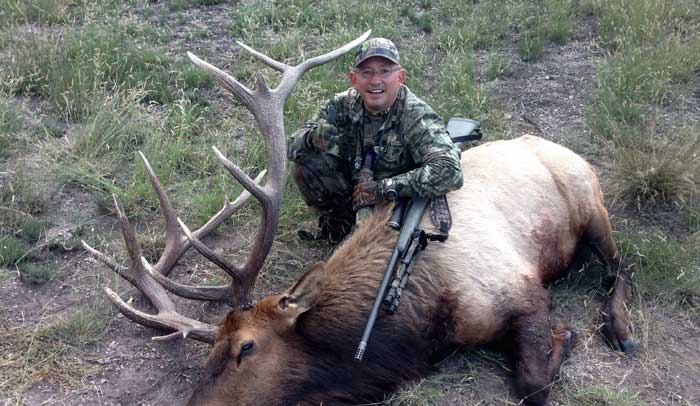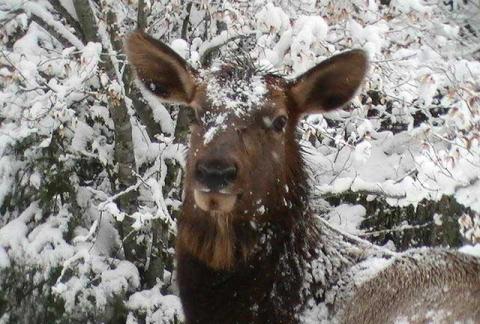Ralph Ramos | Mossy Oak ProStaff

My best bull elk taken in the late season was a 7x10 non-typical bull. I didn’t draw an elk permit, but I was able to purchase a landowner authorization tag. I went out early one morning on this private property. I knew from scouting there that a good number of elk were coming in to two water tanks that had been built on top of a ridge. Where I set up to hunt the water tanks. I had a really good field of view from the top of that ridge. I spotted this bull at about 700-800 yards out from my stand. But instead of coming to the water tanks, the bull went to the spot where he would bed down for the day. So, I let the bull get bedded-down. I didn’t try to move in on him until about 11:30 a.m. or noon. I had to wait on the wind to change, before I thought I could get close enough to the bull, so he wouldn’t hear, see or smell me. I moved slowly and quietly, until I could get into a position about 175 yards from the bull. Then I took him. That bull scored around 365 inches and was a nice, big bull to take in the late season.
I’m often asked, “Ralph, why would you encourage elk hunters to hunt the late elk season?”
The late-season elk tags are much easier to draw than the tags during bugling season, because the largest group of elk hunters want to hunt when the bulls are bugling. If you're interested in taking a cow elk, you just about can draw a cow elk tag every year for the late season in New Mexico.
Several different units in New Mexico have late-season archery tags available, but those tags have point restrictions. Any bull you take has to have six measurable points on one side of his rack. Unit 34 is one of the better units for archery hunting, because when there's snow on the mountains in the late season, most of the bulls will be found on the west side of the mountains, which makes locating bulls much easier. The difficulty in this unit is finding a bull with six points on one side of his rack.
Tags for Unit 34 are a first-come, first-serve tag. Usually those tags are sold out within the first hour that the tags are available. Once again, you'll have to check your regulations to see when the late-season archery tags for Unit 34 are available. All these tags are sold online.
Another problem with this hunt is being quiet enough to move on crunching snow to try and take a bull with a bow. If snow falls the night before your hunt starts, this will make the hunt much easier, because you'll have fresh snow to walk on, and you often can track a bull in that fresh snow. New snow is definitely an advantage for this archery hunt.
Our late season in New Mexico usually starts around the last two weeks in December. Most years the weather is not extremely cold during that time. Our average temperature will be in the mid-20s during the mornings. By midday the temperature probably will be in the lower 50s. So, the weather is not as severe during our late elk season as it may be in other states’ late elk season. Yet another advantage of hunting the late elk season is that the tags are easier to draw. When you find the bulls, it’s much easier to pick out a big bull than it may be earlier in the season.
Go to Ramos Hunts & Video Productions on Facebook to learn more about these New Mexico hunts.
Ralph Ramos has been a member of the Mossy Oak ProStaff for about 20 years. After years of pursuing elk, Ramos became a guide and has been leading hunters to elk for at least 20 years. Elk hunting is a physical challenge for most, but Ramos continues to face the challenge year after year.






























